Light is a pattern of God. Compelling connections concerning light can be found between religious teachings and the scientific discipline of plasma cosmology.
Disclaimer
By study and by faith, I seek truth wherever I can find it.
My paradigm grows from a worldview founded on the Standard Works of The Church of Jesus Christ of Latter-day Saints; namely, the Old Testament or Hebrew Bible, New Testament, Book of Mormon, Doctrine and Covenants, and Pearl of Great Price.
This work draws upon my paradigm, as a lay person, enhanced by biblical scholarship, plasma cosmology, and related models and theories. As such, it contains some of my provisional thoughts, and is subject to revision.
A wealth of perhaps paradigm-shifting knowledge awaits the hungering explorer, to whom I offer this mere appetizer.
Epigraph
“We consider that God has created man with a mind capable of instruction, and a faculty which may be enlarged in proportion to the heed and diligence given to the light communicated from heaven to the intellect; and that the nearer man approaches perfection, the more conspicuous [clearer] are his views . . . .”
Joseph Smith
Introduction
An ideal of science is self-correction. But in reality, some branches of science do not self-correct according to the ideal. For over a century, power, money, and consensus have been influencing the perpetuation and protection of certain narratives in science. Where this has happened, science has been distorted into a type of religion.
Plasma cosmology is a cutting-edge scientific paradigm. On all accounts, in observations, experiments, and predictions, data increasingly validate electrical phenomena and invalidate commonly accepted theories. Therefore, it is a paradigm worthy of serious consideration. However, plasma physics and electrical theory are neither well understood nor well received by many committed to institutional, establishment, mainstream scientific disciplines, including astronomy, cosmology, and geology. However, mainstream astronomers eventually recognized magnetism in space, an aspect of plasma cosmology.
In this work, I seek to introduce plasma cosmology and some benefits that this paradigm can offer in light of a perhaps unexpected field: theology.
I will refer to knowledge obtained through scientific methods as “scientific truth” and revelations from God as “theological truth” or “religious truth.”
As scientific and religious truths increase, a truth of one might inch closer to a truth of the other. But as God tests one’s faith before granting forms of proof, even the faithful few who attain tangible proof of the existence of the living reality of God, the most sacred of experiences, are not granted such for empirical purposes. Due to this disparity, it would seem challenging for science and religion to find common ground.
Many perceive science and theology as separate but not incompatible, while others perceive a rift between them, and a vocal minority exaggerate claims of incompatibility. While science can neither prove nor disprove religion, some dismiss the possibility of compatibility, others recognize only theorized similarities, and yet others attempt to fix what was never appreciably broken. In contrast, I examine what seems to be some of the most compelling connections and propose perhaps a novel perspective to bridge science and theology.
Light
God wants each of us to return to him and he has provided the way. However, we can’t find the way to God on a map. And no amount of exploration of foreign lands, observation of things large or small, or invention of technology can get us there. The way to God requires seeing with our hearts more than with our eyes.
We see what we desire to see and what we choose to see. Light is one means of perceiving physical things. But whether we have eyesight or impaired vision, we can see with spiritual eyes, seeking to understand and discern the truthfulness of things we cannot physically see.
Light plays prominent roles in theology and in science. In theology, light can be a metaphor or symbol for religious truths, being associated with revelation and our identity, example, and potential. And in science, light is integral to observations and is the subject of some experiments. But despite centuries of empirical testing, scientific understanding of light remains largely theoretical. Many questions remain, including basic questions, about the nature of light, which are beyond the scope of the discussion.
On the surface, theology and science do not appear to have any observable or testable phenomenon in common. This leads some to perceive a rift or gap between them, presuming that certain spiritual truths must be false. Others seek to blend scientific theories with scripture to explain spiritual truths to rational minds. And yet others maintain that any science that seems to contradict a spiritual truth, or a cherished interpretation of scripture, must be false.
Regardless of whether one perceives a gap between them, theology and science do share aspects, one being light. By combining the differing uses of light in theology, specifically in Restoration scripture and teachings, and light in science, specifically in plasma cosmology, it may be possible to bridge theology and science.
Science vs. Theology
Those who believe that science is the best source of truth may reject claims of theological truth. And those who believe in theological truth are unlikely to be concerned with perceived incompatibilities between science and theology. As such, many differences and few similarities exist between science and theology.
Science is defined as the observation, identification, description, experimental investigation, and theoretical explanation of phenomena. And theology is defined as the study of the nature of God and religious truth.
Science seeks truth bottom-up through physical senses in which seeing is believing. And theology claims truth top-down through spiritual means in which believing is seeing,
Science is about the observable. And theology is about the unobservable.
Science studies facts to attempt to discover truths and laws of nature. And theology comprises truths and laws that are not discovered from studying facts but that are revealed by God. Facts can change according to circumstances, whereas truth does not change.
Most sciences study observable physical reality—the natural world, or nature, which includes space. Other sciences study phenomena that are not observable but whose effects are.
Most religious truths and phenomena cannot be scientifically studied. These include truths that cannot be observed and laws that are neither known to nor are controllable by man. Its truths concern the past, the present, and the future. And its laws concern the power of God. Although some activities based on religious truths, such as prayer, fasting, diet, and healing practices, have effects that can be studied, the laws upon which they are based cannot be completely studied because they are laws of God.
Science is a process. Scientific studies of religious phenomena can neither prove nor disprove religious truth. Man can know about God, his truths and his laws, only on God’s terms; and about nature, its truths and its laws, only according to his knowledge and abilities. Moroever, God can reveal whether any “scientific” understanding is or is not accurate. Thus, there does indeed seem to be a gap between what God has as yet revealed and what man has as yet discovered.
The Perceived Gap
As scientific truths are mostly observable and religious truths are mostly not observable, some perceive between them a vast unbridgeable gap. This gap is between the different types of truth or knowledge pertaining to each, and how each seeks, obtains, and uses their differing forms of knowledge.
Religious truth is about the purpose of life and how to return to God through his laws. And scientific truth is about how everything in nature works, or the laws of nature.
Religious truth is revealed by God and describes things as they are, were, and will be. And scientific truth is obtained through observing phenomena and creating models to describe them, the ultimate objective being to describe things as they are, were, and will be.
“True” religion comprises truths revealed from God, relies on truths that have been revealed, is open to more truth, and perpetually corrects itself according to new revelation.
“True” science is composed of ideas generated and vetted by man, relies on truths that have been previously discovered, is open to more truth, and perpetually corrects itself according to new discoveries. Ironically, an idea could be inspired by God while this fact remains unknown by the recipient of the idea.
The preceding descriptions specify “True” religion or science because there are corruptions among both. In some religions are doctrines claimed to be God’s truths although God did not reveal them, which doctrines may misinterpret or conflict with truth. Some models are ignored even when there exists more supporting evidence for them than for currently accepted models. And sometimes scientific methodologies are not correctly followed.
For instance, the correct way to create a model is to first collect data through observing a phenomenon and experimenting, and then to explain the data. However, some models have been created incorrectly—unscientifically—by imagining how a phenomenon works through a “thought experiment” and stopping there, perhaps because they cannot be empirically tested, and then attempting to find evidence to fit the imagined data. If a model cannot be tested, it should not be elevated to a theory but remain a hypothesis.
Scientists and theologians seek new knowledge and to fill gaps of knowledge. Relative to science, it has been said that “All models are wrong but some are useful.” And this describes not just the efforts of scientists but also of theologians.
Man knows about only those things of God that God has revealed. And man knows the most about those things of nature that have been studied the most and studied according to correct scientific methods.
Although the differences between science and theology are many, they do have things in common or other connections. And these connections are what has the potential to bridge the gap that some perceive between them.
Connections
Science and theology comprise very different kinds of knowledge. However, they share similarities, at least ideally, of seeking and discovering truth and adapting to new knowledge. But these similarities are not as strong as other connections.
Among their connections is where harmony is possible but also conflict. Conflicts can arise due to gaps of knowledge or truth. As long as these gaps exist, questions will remain, and ideas can flourish about the shapes of missing puzzle pieces.
Where there is truth there is harmony, not conflict. Truth is harmonious because truth neither changes nor contradicts any other truth. At the intersections of science and theology, where puzzle pieces remain missing, we can consider how they could potentially harmonize.
One connection is of laws. Laws describe cause and effect. Laws of nature are also laws of God because God created everything in nature and he acts according to law.
All phenomena occur because of laws. For instance, the terms miracle, supernatural, paranormal, and metaphysical do not describe phenomena that break a law of God or of nature but that indicate where man does not know all the laws involved. And one way to learn about laws is by experimenting.
A second connection is of experiments. Experiments are tests that examine laws.
In science, observing phenomena as they occur in nature is one source of data, but experimenting with phenomena is much more informative. Experiments allow the observation of laws under controlled conditions, revealing more examples of cause and effect. However, if every condition or variable influencing results is not known, then the data may be between incomplete and in error. Nevertheless, data from experiments are key to understanding phenomena and for scientific progress, hence what “science,” or, rather, scientists, say today may change tomorrow.
God and his prophets invite us to test, try, experiment, and prove their words and promises. They want us to know for ourselves by our own experiences that their words are true, that the spiritual laws they teach are true, that the results do not change daily.
Through experiments, we obtain evidences of truth.
And a third connection is of evidences. Evidences point to truth—they do not prove truth. The more numerous and likely the evidences, the more likely the truthfulness. Evidences are the convincing power that something is true.
Evidence in religion is subjective, discovered through faith and personal experiences.
Evidence in science is objective, discovered through demonstrable facts.
To receive evidence that a religious truth is true, a person must act in faith, belief, or with a desire to believe in the possibility that a concept is true. Then, according to God’s will, he will provide evidence of whether the concept is true. Evidences are generally received as impressions to the mind and the heart together, but there may be other forms of confirmation or more to the experience. Each experience is personally unique, and experiences someone has may differ or change over time.
To receive evidence of a scientific truth, the model of a phenomenon must be demonstrated. The more numerous and varied the circumstances of the demonstrations, the more likely the model describes truth.
With their connections of laws, experiments, and evidences, it might be possible to bridge the perceived gap between science and theology. But this would fill in only some pieces of the puzzle. Still missing would be what might cross this bridge. Perhaps one of these pieces could be sketched based on patterns among their connections.
Patterns
God follows a pattern in everything. This is why we can find patterns in nature, which is God’s handiwork, as we study the various parts of nature—or life, the universe, and everything—and collectively call these quests for knowledge and understanding “the sciences.” And this is also why we can find patterns in the scriptures.
The people in Bible times had some very different understandings, beliefs, and cultures than we do today. This includes the ancient Israelites and their many neighbors.
While these peoples shared some things in common, they were also influenced by each other, including in worship practices. Because the Israelites started worshipping idols of their cultural neighbors, God commanded the Israelites against idolatry. Aspects other than religion surely also influenced the beliefs and culture of the Israelites and their descendants, including the Jews, and thus scripture.
Then and now, God speaks to us, his children, according to our understanding. A revelation from God may build upon or correct what we currently know or believe.
To understand the scriptures better, it helps to understand the people they were written for, their understanding, and how the scriptures were written. The scriptures were written with various literary devices and contain many types of writing, such as history, poetry, songs, letters, talks or sermons, and visions and dreams filled with symbols, all of which the original, intended audience would have understood.
In these different types of writing are commandments, counsel, prophecies about the future, such as the vision of the woman and the dragon in the book of Revelation, as well as revelations about the present and the past.
Therefore, some scriptures are best understood literally, such as commandments; and other scriptures are best understood symbolically, such as parables. Parables are symbolic stories that can include real and/or fictional things to teach a principle. For example, the events may be realistic but the people may be fictional, as in the parable of “The Good Samaritan.”
Or, the people and places may be real but the events may be a mixture of real and symbolic, as in the Creation. In other words, some scriptural accounts are mythologized.
The focus of the scriptural accounts of the Creation isn’t as much about what, when, where, or how things were created as they are about who created them and why they were created, or their functions or purposes. The accounts of the Creation are about real things and real individuals. The earth, the Sun, the Moon, and the stars; the plants and animals; and the people and personages—all of these things and people in the Creation are real. But the events of the Creation are somewhere between real, symbolic, and prophetic.
It is unknown what astronomical knowlege the ancient Israelites had. But at least some of the people in Book of Mormon times knew that the Earth revolves around the Sun.
The origin of the cosmology of the ancient Israelites or why it is described as it is in the scriptures is unknown. One idea is that the Creation can be viewed as a response to the cosmology of their idolatrous neighbors, showing, for instance, that the God of Israel was the only God, and that their neighbors’ gods weren’t actually gods. Regardless, scriptures that touch on cosmology were intentionally symbolic, metaphoric, or poetic, and not scientific.
Scripture includes references to the earth as generally flat; the sky as containing not only clouds but also the Sun, the Moon, and the stars; above the sky a firmament, or solid dome, with waters above and below, and openings called the doors or windows of heaven, which keep back the waters above; and above the waters being the heavens and God.
These ideas and others in the scriptures are very different from what most people today understand because of science.
In general, because of the symbolic nature of some scriptures and the tentative nature of science, each is best understood and used in its own context, according to its intended use or caveats. Science can be wrested as well as scripture. Although scriptures and science may have similarities and connections, the scriptures are not science and science is not scripture. While what is true is true regardless of its source, a truth can be expressed in innumerable ways.
Today, we learn a lot about the earth and space through observations and experiments using scientific methods and technology. Although there are limits to what we can observe and perceive, we can create theories to describe what we can perceive and how we perceive it. But because theories are only attempts at making sense of data, some theories include more truth than others. The more a theory is based on patterns of nature, or patterns of God, the more it will stand the test of new data over time.
Studying Space
Space sciences are about studying the universe or cosmos. These branches of science include astronomy, astrophysics, and cosmology. Each of these study different things in space and in different ways, and some overlap.
Astronomy studies objects in space, or celestial objects and phenomena, such as stars, galaxies, and nebulas, including their position, motion, and chemistry.
Astrophysics, which is related to astronomy, studies the physics of celestial objects and phenomena.
Cosmology studies the universe as a whole, from its origin to its fate and everything between.
The terms universe and cosmos are commonly used synonymously to describe every object in space and their interactions over time. Although these terms are very similar, their meanings vary slightly. Basically, the cosmos is more inclusive and expansive, or is, in a sense, “bigger” than the universe.
Universe implies static, separate, mechanical: every thing and every law of nature that exists, always has existed, always will exist, and will never change.
Cosmos implies dynamic, connected, interdependent: a harmonious order in which everything exists and interacts according to the laws of nature.
The terms universe and cosmos could be considered as two models of nature. Each is similar by including the laws of nature, but different according to the nature of those laws.
Cosmos is holistic, viewing nature as one great whole—or one big pie. But a holistic view of nature contrasts with much of modern science. Modern space sciences—or scientists—view gravity and related forces as dominant but dismiss the possibility of electrical phenomena in space.
Also, modern science typically reduces everything into its smallest individual parts for isolated study. While this approach has its uses, it stifles the ability to observe interrelationships to see a bigger picture.
As an analogy, after a pie is sliced, the whole pie cannot be restored, as connections have been irreparably destroyed. Relating this to science, individual parts (slices of pie), are best studied not only individually (as unique pieces) but also relative to other parts (to other slices), as a whole (the unsliced pie), and to other phenomena (the container, oven, baker, consumer, toppings). Multidisciplinary studies increase the potential for more patterns to be recognized and more truth to be discovered.
In space sciences, phenomena that indicate connectedness throughout the cosmos include electricity, magnetism, and plasma.
Plasma Cosmology
Plasma cosmology is a model of the universe in which plasma and electromagnetic forces dominate.
There are a number of definitions for plasma, most of which refer to fluids or fluid-like substances, including in blood, milk, muscles, and other biological cells. But the plasma of cosmology is a state of matter separate from solid, liquid, and gas.
Plasma can exist in states analogous to gas, liquid, and solid. Plasma is composed of freely moving, electrically charged and neutral particles, including electrons, atomic nuclei, atoms, and cosmic dust. (Deficiencies in the mainstream model of the atom, the Standard Model, is beyond the scope of this discussion). Cosmic dust is not the dust of dust bunnies but is more like smoke and sand, comprising microscopic particles. Plasma is unorganized matter.
Although space may appear to be mostly empty, over ninety-nine percent (99%) of space is plasma, including the seemingly empty space as well as the largest objects and structures in space, these structures being plasma filaments.
Plasma conducts electricity, and electricity generates a magnetic field. While there are stationary magnets on Earth, everything in space moves continuously, so where there is magnetism in space, it is most likely caused by electricity. The interactions of electric and magnetic fields in plasma produce a variety of phenomena.
A double layer is a structure that consists of two parallel plasma layers, each with an opposite electric charge, sandwiched together. Some double layers conduct electricity, others do not. Due to instabilities, they can explode and then reform and repeat this process. Double layers can be translucent like layers of an onion, and are visible in some galaxies and nebulas.
A current sheet is a thin surface of particles in which electricity flows. Similar to a double layer, a current sheet separates two regions of plasma. A current sheet extends from the Sun beyond Pluto, commonly called the heliopause, is the Sun’s electric field. This current accelerates charged particles of every element through the solar system. Although this is called a “solar wind,” is not the wind of a planet’s atmosphere but an electrical current.
A Z-pinch is the compression of an electrical conductor, such as plasma, by magnetic forces. This compression forms plasma into a filament, or strand, like an electrical wire. Current sheets can also combine into filaments. Another pinch effect produces a double lobe, the shape of an hourglass.
Filaments are seen in nebulas, galaxies, comets, and asteroids. And other pinch effects are seen in lightning, solar flares, current sheets, and auroras, such as Earth’s northern lights and southern lights. One place stars form is along filaments, similar to beads or pearls on a string.
A Birkeland current is a spiraling filament, a form of plasma pinch. Like power lines on Earth, Birkeland currents conduct electricity. They connect stars with their planets and at least some planets with their moons. They have been observed extending an estimated ten million (10,000,000) light-years; in comparison, the width of our Milky Way galaxy is an estimated one-hundred thousand (100,000) light-years.
Shooting from galactic centers are galactic jets, and cosmic jets from some stars. These jets exhibit plasma phenomena, including Birkeland currents, streaming for thousands of light-years.
Two Birkeland currents can intertwine to form a helix, a rope-like structure. This structure is of current sheets in cylindrical shells, every other layer rotating in the opposite direction. Two pairs of Birkeland currents can interact to form a spiral galaxy comprising two discs of plasma, one the doughnut-shaped center that rotates one direction, and the other a disc a number of times wider, rotating in the other direction. Counter-rotating sheets are also a feature of auroras, which occur in the atmospheres of some planets. Galaxies are also like nebulas, composed of plasma, in which stars and planets form. Stars are often formed in pairs, called binaries. Some stars and planets that are sometime ejected from where they were formed are called rogue stars and rogue planets.
Also associated with electrical phenomena, including Birkeland currents, are polygonal, especially hexagon, formations. These are seen in galaxies, atmospheres, auroras, craters, and hurricanes.
Depending on how much electricity flows through plasma, plasma can be in one of three modes: invisible, glowing, or glowing very brightly. These modes are called dark mode, glow mode, and arc mode, respectively. Dark mode, although invisible to human vision, may be seen in the radio spectrum of light. Glow mode is visible and is seen in nebulas, fire, neon lights, incandescent light bulbs, fire, rocket exhaust, plasma torches, and plasma globes. And arc mode, the brightest of all, is seen in stars and created by arc lamps and arc welders.
Electrical effects permeate plasma cosmology and other fields of science, including geology, meteorology (weather), biology, and chemistry. Studying all these with an electric lens continues to reveal amazing discoveries. However, some evidences of geology are as strong as plasma cosmology as evidences that processes that shape the cosmos are primarily electric. And other theories, such as meteor impacts and erosion, cannot explain these phenomena as well as electricity.
Many craters indicate electrical effects. There are chains of neatly spaced, overlapping craters in straight lines. And there are craters with hexagonal shapes, central peaks, straight sides, smaller craters on their rims, and double-lobed craters resembling a dividing cell. These effects indicate the power of electrical discharges or arcs like lightning but much more powerful than is usually observed. Debris is not scattered around these craters. But what is found near some has been melted to form small spheres, or spherules, also called blueberries (due to their shape, not their color), which have been found on Earth, the Moon, and Mars.
Some valleys and channels indicate electrical effects. These include straight sides, central peaks, and precise geometric angles. Another effect is a Lichtenberg figure, which is a tree-like pattern with properties of a fractal, a self-repeating pattern. These effects have been found on Earth and Mars. Can water erosion form these types of patterns?
Rock can conduct electricity if it has a certain component, and a type of star is theorized to eventually become a star-sized sphere of this same component—crystal.
Naturally, unanswered questions remain, and so there are also theories based on plasma cosmology, or attempts to fill in some of these gaps of knowledge.
For instance, electricity flows in a circuit. A power source connects to components that connect back to the power source. As such, do stars glow because they are components in an electric circuit connected by Birkeland currents, or do stars glow independently, or both? Do stars connect to other stars or just to the plasmoid of galactic centers? Because plasma filaments have been observed to connect not just galaxies but also groups of galaxies and groups of groups of galaxies, do all filaments connect somewhere, perhaps to a central location in the cosmos? And in addition to galaxies and perhaps stars, do planets also have a plasmoid core? Is inside what is currently thought to comprise the Earth’s core, is its innermost core a plasmoid?
On planets and moons, some valleys and craters appear to have been formed by lightning more powerful than or recognized in recorded history, as well as several other electrical effects present in geological formations. When a planet’s or star’s magnetic field is overcharged, it can discharge plasma, or lightning, inward; on a planet, this could excavate the surface, forming canyons, valleys, and riverbeds. Such formations could be formed in mere minutes or hours—incomparably quicker than time frames suggested in mainstream geological theory.
Plasma formations observed in laboratories are depicted in petroglyphs indicate that ancients recorded plasma phenomena observed in the sky. Common features of world myths may indicate that certain planets were closer to Earth. Mythological gods, often associated with planets, may encode more realism than many realize, depicting displays of plasma phenomena, thunderbolts across the sky.
The electric force attracts and repels and can be incredibly strong. Due to the immense power of electromagnetic forces, other forces theorized to exist may not actually exist but may instead be forms of electromagnetism. For instance, electric forces are far stronger than gravity (billions of trillions, up to thirty-nine orders of magnitude, or 10^39 times stronger); and gravity, which seems to only attract, can be controlled by electric forces. And electric forces can separate electrons from an atom, split bonds between atoms, and change atoms from one element to another—transmutation.
These are some of the many evidences that the universe—or rather the cosmos—is electric. Filaments connect celestial objects as well as components in living cells (and that filaments also connect people is beyond the scope of this discussion). The double helix is the shape of Birkeland currents and DNA. And adjacent craters can resemble cells as they divide. Filaments are another pattern of nature, or pattern of God, at large and small scales.
As electricity acts on plasma, light is emitted and order is created from chaos. The phenomenon associated with the organizing of matter is electromagnetic, or in other words, is light.
Light in Theology
In the treasure trove of revelation given so far in these the latter days, some gems touch upon light and the cosmos. Several of these verses I have combined for clarity into these seven (7) phrases (D&C 88:6–13, 84:45–46):
The power of God is light, which is Spirit and truth.
His light proceeds from his presence to fill the immensity of space and all things.
His light is the power that governs and is in all things.
His light is in and is the power that made the Sun, Moon, stars, and Earth.
His light gives life to and quickens the understandings of every person.
His light is the light of truth.
His light is the light and Spirit of Christ.
From pre-mortality to the resurrection, light is integral to life and salvation. And matter, spirit and physical, is integral to life.
There is a spirit reality and a physical reality down to the smallest element or particle of matter. In scripture, the elements are sometimes called dust. Spirit is also matter but it is more fine or pure than physical matter. The organization of physical matter follows the pattern of spirit matter.
The elements have agency, or the freedom to choose to obey or disobey. Spirit individuals also have agency. A main difference between the elements and man is that the elements apparently always obey God, although it may also take time for them as it does for mortal individuals.
Spirits obtain a physical body through birth. Life consists of a spirit body connected to a physical body. Mortality is a test of our obedience to God, whether we will receive his light, truth, and Spirit.
Light is as the conscience, instructing every person whether something is good or not. Choosing good fills our bodies with light. We are to seek light. The glory of God is intelligence, or light and truth. God’s work and glory is the immortality and eternal life of man. Glory is honor and light.
Light also relates to scripture and revelation.
The Old Testament, or Hebrew Bible, refers to instruments that prophets use for receiving revelation from God. These instruments are called the Urim and Thummim, which can be translated as lights and perfections—light and truth.
Joseph Smith received with the plates of the Book of Mormon a Urim and Thummim, those had by the brother of Jared, or Moriancumer, of the book of Ether in the Book of Mormon. Joseph used this Urim and Thummim to translate portions of the Book of Mormon.
Joseph also used a seer stone to translate portions of the Book of Mormon.
Revelations given to Joseph through the Urim and Thummim and the seer stone were written on or appeared in these stones literally in light.
The instruments in the Book of Mormon called interpreters were for translating languages. The book of Ether was translated with the interpreters. The Nephite interpreters are likely another Urim and Thummim, which may be separate from Moriancomer’s Urim and Thummim.
The Book of Abraham also refers to a Urim and Thummim, and Abraham’s may be separate from the Urim and Thummim of the Old Testament. With the Urim and Thummim, Abraham received a vision of a series of stars and planets, the Sun, the Earth, the Moon, and how they govern time. One is above another, and so on, until the star nearest to God.
According to Joseph Smith, figures of Facsimilie 2 in the Book of Abraham represent stars or planets. They govern time with light. They receive and borrow light or power through mediums of power, until the star nearest to God.
The Lord showed Abraham these things for many reasons. One reason was to compare this series of stars to intelligences, or spirits. As there are great stars that govern time as measured from Earth to where God resides, so too are there great spirit personages God chose to govern, or his prophets and other servants until God, the most intelligent of us all.
Light is connected with life, creation, and revelation. God is the Father of lights, thus we are beings of light. Light proceeds from God from star to star and planet and moon and man and fills the immensity of space. Revelation is given through spiritual light to one’s understanding, and through physical light to the eyes through revelatory instruments. Symbolically and literally, spiritually and physically, light is integral to theology.
Light in Science
Although light is studied, its components remain elusive, thus the existence of different models of light. Many models seek to explain light. One model sees light as waves of electromagnetic radiation, consisting of interdependent electric and magnetic fields. Another model sees light as particles of light, to attempt to explain how light can be observed to behave as a particle as well as a wave.
Light has different names according to its frequency or wavelength. From the lowest frequency and longest wavelength to the highest and shortest are radio waves, microwaves, infrared, visible light, ultraviolet or UV, X-rays, and gamma rays. FM and AM radio stations broadcast radio waves, microwave ovens and cell phones use microwaves, people can see visible light, insects can see UV, medical X-ray machines use X-rays, and gamma rays are harmful to biological life. Visible light is a very small portion of the entire light, or electromagnetic, spectrum.
With the unaided eye, the cosmos seems mostly dark. Far-away objects, such as moons, stars, galaxies, and nebulas, are like specs of white paint flicked onto a black canvas. But each of these specs emits or reflects light. Under closer examination, the cosmos is teeming with light. With technology, we can see light that the eye cannot—a brilliant playground of color.
Mainstream cosmology, however, suggests darkness—physically and intellectually. For instance, “black holes,” “dark matter,” and “dark energy.” These theorized phenomena are not supposed to be detectable with light, so their effects are hunted. Other elusive concepts include “space-time,” “neutron stars,” and a “Big Bang,” or primordial expansion, from which all matter was created from nothing. Such incomprehensible concepts have resulted not from objective science but from imagined assumptions, and these have become dogmas.
However, the mainstream seems to be gradually acknowledging data despite dogmas. Simulations of dark matter essentially model plasma filimentation, and magnetism has become irrefutable, but coupling magnetism with electricity still remains too far a leap for many to consider.
On the other hand, plasma cosmology suggests light. Electricity, magnetism, and plasma can explain many observed and experimental phenomena that mainstream theories cannot. For instance, plasma describes galaxies better than black holes, and electrical phenomena of comets better than gravity. Plasma comprises most of the matter in the cosmos and it can emit light, unlike dark matter. And even in its mode called dark mode, plasma is detectable, unlike dark energy.
Bridging Science and Theology
Light is a potential bridge between science and theology because light is a scientific and a theological concept. In science, light is a physical phenomenon that can be detected and manipulated. In theology, light refers to symbolic as well as physical phenomena. However, the challenge is that many theological concepts are unlikely able to be scientifically studied.
Geology is another potential bridge between science and theology, likely with the next highest potential after light. This evidence relates to numerous processes, as well as to crystal. Geologically, crystal conducts electricity and is a medium for light, and the composition of rocky planets includes crystal. In the mainstream, the life cycle of the theoriezed neutron star may eventually end in the formation of a crystal. Theologically, Joseph Smith taught that this earth will eventually become a Urim and Thummim, or crystal.
However, as the vision of the cosmos to Abraham was according to the understanding of the Egyptians, whether it reflects reflects cosmologicial science remains unknown. It would be something of a miracle if a scientific discovery were shown to correlate with a theological truth. Until then, we have the word of God, which says that his light is the same light that shines and that quickens our understandings. This indicates that physical light and spiritual light, or the light that fills the cosmos as well as the light of Christ, are, in an as yet unknown way, the same light.
Additional bridges between science and theology may also be found. In the book of Moses, Enoch taught that all things above and beneath have their likeness and are created and made to bear record of God—things temporal and spiritual, things in the heavens, and things on, in, and under the earth. By understanding theological truths and studying life, the cosmos, and everything, it may be possible to identify more scientific discoveries or patterns that parallel spiritual truths.
More patterns exist in nature and theology. One of these patterns is numbers. For instance, in nature, numbers occur in growth patterns of plants, such as in stems, leaves, and seeds. And in scriptures, numbers are symbolic, representing spiritual truth, such as seven (7) for completeness or perfection. However, numbers are not spiritual truths but can represent them. This also applies to shapes, which in nature closely relate to numbers. Shapes have also been used as symbols and are not spiritual truths but can represent them. At present, it seems that numbers and shapes are patterns of God but not bridges between science and theology.
With light as the greatest potential to bridge science and theology, scriptures related to light combined with the science of light can offer new possibilities.
Jesus Christ is the light
The light of Christ has many meanings. He is “the light” in many ways: spiritually as intelligence and conscience; figuratively as truth, or his teachings; and perhaps also physically as electromagnetism. He is also the life of the world, and our lives depend on his light. The light that proceeds from the presence of God through the immensity of space is spiritual and perhaps also physical light, the physical light that creates or organizes matter in the cosmos.
Let there be light
On the first day in accounts of the Creation, God said, “Let there be light.” To create is to organize, forming something new by combining or arranging existing materials. Waters in the Creation are chaotic or unorganized matter, symbolized by darkness. The process of creation includes dividing or separating. God commands the dust, or the elements, to move or separate, and they obey. Order emerges from disorder.
The cosmos is filled with unorganized plasma in darkness, or dark mode. Electricity flowing through plasma creates magnetic fields that can form filaments, and pairs of filaments can combine to form a Birkeland Current. These can emit light and interact to create galaxies, stars, planets, and other phenomena. Filaments can attract and form a new structure. Spiritually and physically, light cleaves to light.
All things spiritual and physical are matter, or made of elements. Joseph Smith taught that spirit matter is more fine or pure than physical matter. Otherwise, spirit matter is unknown, and likely unknowable, to science.
At present, 118 elements have been observed. Each element has unique characteristics, and the characteristics of individual atoms of each element can change, such as when electrically charged. Combinations of atoms are called molecules, and molecules have their own characteristics.
Virtually every element has been identified accelerating into space from the upper layers of the Sun’s atmosphere. And results of plasma experiments, which commence with certain amounts of certain elements, have concluded with elements that were not present when the experiment commenced. This indicates that plasma can transmute element, or transform one element into another element. This phenomenon is electrical. And light is an electric, or an electromagnetic, phenomenon.
The speed of physical light is not constant but depends on the medium, or what it travels through. Its speed has been averaged to about one-hundred and eighty-six thousand (186,000) miles per second in a vacuum. Traveling from the Sun to the Earth, light takes about eight (8) minutes. At present, light has been slowed down not only to about 38 MPH but also completely stopped. While light is fast, electric and magnetic fields are much faster. The speed of their influence reaches from the Earth to somewhat beyond the Andromeda galaxy, which is about two and one-half million (2,500,000) light-years from Earth, in one (1) second—essentially instantaneous.
Your body will be full of light
The light of the body is the eye, and if your eye is single to the glory of God, your body will be full of light.
The BYU Jerusalem Center was allowed to be built due to an agreement that the Church and the university would not proselyte, or do missionary work, in Israel. A friend of the general authorities of the Church then present said, “Oh, we know that you are not going to proselyte, but what are you going to do about the light that is in their [the students’] eyes?”
Spiritual reality affects physical reality. Some people can recognize when someone is filled with light. It’s described as an inner light, is usually recognized in the eyes, but has also been described as a glow. The body also emits light, and the measurements of this light are called biophotons.
Biophotons are too weak to see but they can be detected with technology. Cells throughout the body, including the skin, emit biophotons. Cells and DNA use biophotons to store and communicate. Many factors affect biophoton emissions, including what we think about, or our intention, and forces of the Sun and the Moon.
In addition, water molecules, of which the body is largely composed, can store light from the Sun like a battery.
Conclusion
Plasma cosmology offers scientific truths with compelling connections to religious truths. These truths center on light. Scientific light parallels theological light. And some of these parallels are potentially detectable scientifically.
Some light we can see, other light we are meant to seek. Light is a pattern of God. Physical light as well as spiritual light enables life and sight. But no matter how breath-taking physical light can be, spiritual light enables sight beyond the limits of physical light.
The extent of knowledge that man may be able to obtain scientifically might only ever reach toward what God may be willing to reveal about his truths. Nevertheless, if we seek, we will find. If we seek to find out about God’s creations, which testify of him, we can do so in ways we can devise. And great things can be discovered through physical light.
If we seek spiritual light, or to find out about God and his truths, we can do so in the ways he has provided. However, God wants us to find out not merely about his creations, about his truths, or about him. God wants us to find him. And we can’t find God on a map or with technology. We must seek him according to the light he has given us, seeing with our hearts more than with our eyes.
Sources
Arp, Halton, et. al. Documentary, Universe: The Cosmology Quest – Part 1, Part 2.
Clarage, Michael of The SAFIRE Project. Video, New Views of the Interstellar Medium, image excerpts: nebula, cell, DSS1, Herschel.
Davidson, Ben of Suspicious0bservers.Org, etc.
Videos on star water.
Videos on Space Weather News.
Infomentary, PLASMA COSMOLOGY.
Oct.31.2019, excerpt of possible first modern plasma discharge crater on Earth.
Dec.22.2019, excerpt of possible plasma core of Earth.
EverythingsElectric.Com. Blog.
Faust, James E. Talk, The Light in Their Eyes.
Ji, Sayer. Article, Biophotons: The Human Body Emits, Communicates with, and is Made from Light.
Larson, Anthony E. (1943–2018) of Mormon Prophecy. (Honorable mention—a kindred spirit).
Lerner, Eric of LPP Fusion. Video, How Focus Fusion Works, image excerpts of plasmoid formation.
Margetson, William Henry. Oil painting, The Good Samaritan.
Max Planck Society. Millennium Run simulation.
McKay, Phil. Art, Revelation 12: Woman and the Dragon.
NASA. Video, ScienceCasts: Two Sides of the Same Star, image excerpts of magnetic field of magnetars.
Paukner, Michael. Illustration, Ancient Hebrew Cosmology.
Peratt, Anthony L.
Articles, etc.
PlasmaUniverse.Info. IEEE Nuclear and Plasma Sciences Society.
Presentation, Peratt And Petroglyphs (On the Origins and Icons of Antiquity).
Book, Thunderbolts of the Gods, excerpt on petroglyphs.
Phys.org. Image from Hunting high-mass stars with Herschel of the W3 giant molecular cloud annotated with star-forming regions.
Plasma Universe. Peer-reviewed articles.
PlasmaCosmology.Net. Blog.
Pollack, Gerald. Article, Can Humans Harvest The Sun’s Energy Directly Like Plants?
Robitaille, Pierre-Marie.
Articles at viXra.org.
Videos at Sky Scholar.
Scott, Donald E.
Article, Birkeland Currents: A Force-Free Field-Aligned Model.
Book, The Electric Sky.
Select videos on Space News at the Thunderbolts Project.
Sheldrake, Rupert. Video: Science Set Free.
Smith, Joseph. Letter to the Church, circa February 1834.
Talbott, Thornhill, et. al. Documentary, Breaking the Science Barrier.
The Standard Works. The scriptures of The Church of Jesus Christ of Latter-day Saints.
Videos on Space News.
Yelverton, Billy. From Suspicious0bservers.Org, image excerpt showing rock conducting electricity.
So What?
Whether or not this discussion has been interesting to you in any degree, you might ask questions such as:
“What’s the point?”
“What good is yet another theory?”
“How could this possibly apply to my life?”
“Who cares about science if God matters most?”
These are fair questions. Ultimately, it is true that loving God and loving our neighbor as ourselves, or living the gospel, or following Christ, or however you might phrase it, is the most important thing in life. And it is true that of the vast array of knowledge available today and its increase tomorrow and so on, very little of it, no matter what it’s about, affects our daily lives. Although something may not be useful now, it may become useful later.
Has some small thing sometime somewhere someone in the world did affected your life? Innumerably! Every aspect of our lives can be traced back through a web of events, including thoughts, words, choices, as well as natural occurrences among individuals and groups or and other events, spanning the world throughout the history of the world. One by one, these things add up, culminating in our present conditions and our individual lives. Staggering to think about, no?
Now, the ideas I have presented here are unlikely to influence any more than breathing against the wind, or spread any faster than frozen butter in Siberia, let alone lead to anything life-changing. However, ideas from a variety of sources may become a series of dots that someone may connect to create something amazing. So, how might this connect to that for you?
The more light and truth we receive, the more expansive the possibilities. Diversions and dead-ends dot our paths, including wandering off onto tangents leading nowhere beneficial.
The more light and truth we have, the better we can detect error and deception. There are those who want us away from light, knowledge, and truth, and who intentionally strive to derail us, while others may misguide us innocently.
The more light and truth we have, the easier it can be to receive more. Even if we learn truths we cannot utilize in this life, the light we receive can rise with us in the resurrection.
In mortality, our privileges and challenges include seeking and receiving further light. Will we choose to seek? Will we accept what we receive? And what will we do with what we receive?

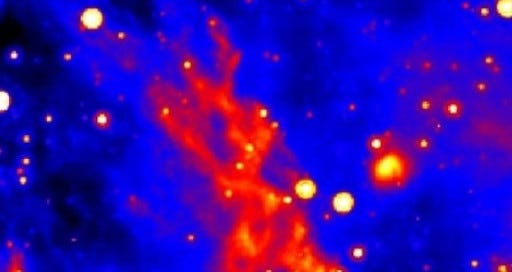

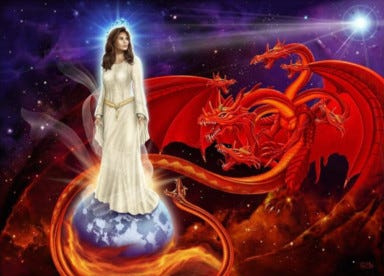



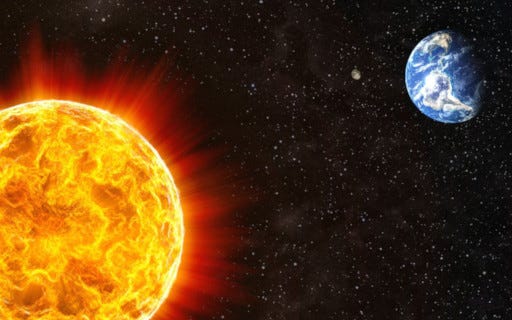


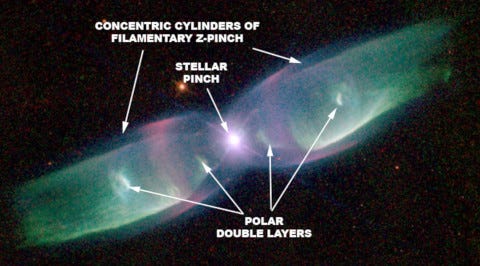
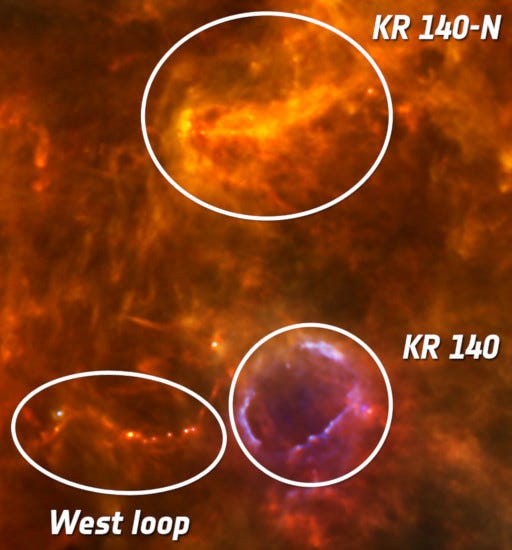
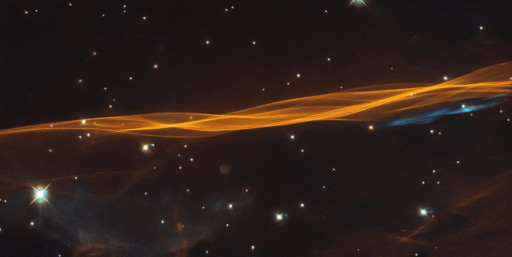
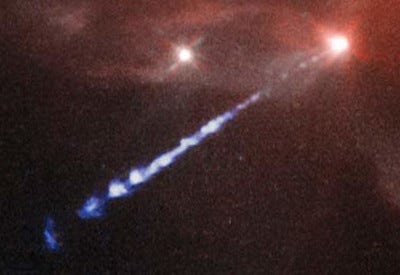

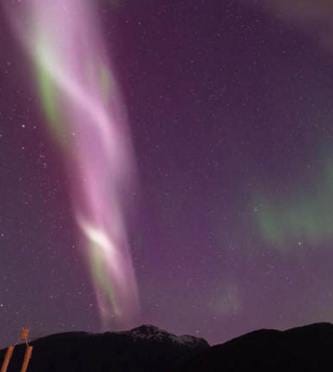
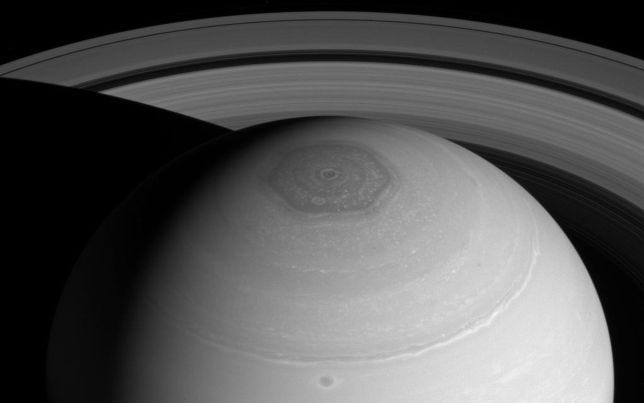
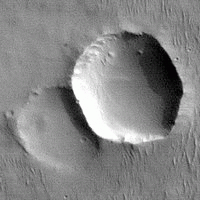
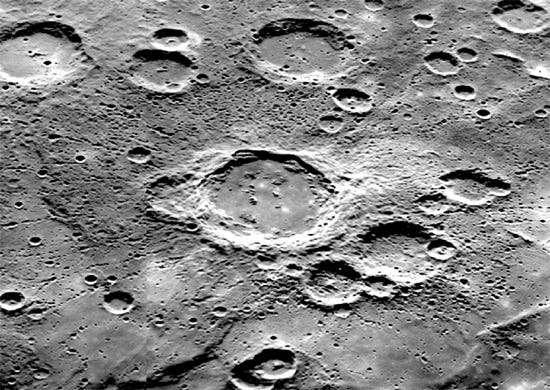
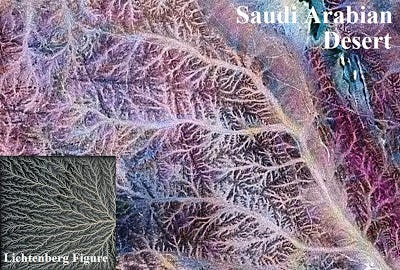
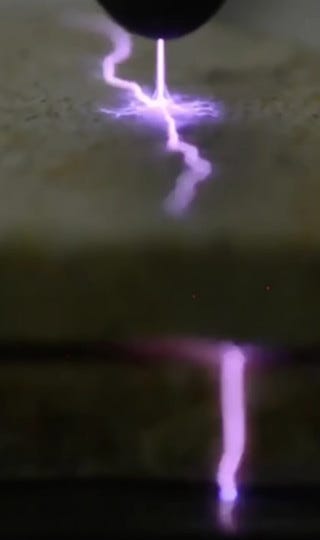



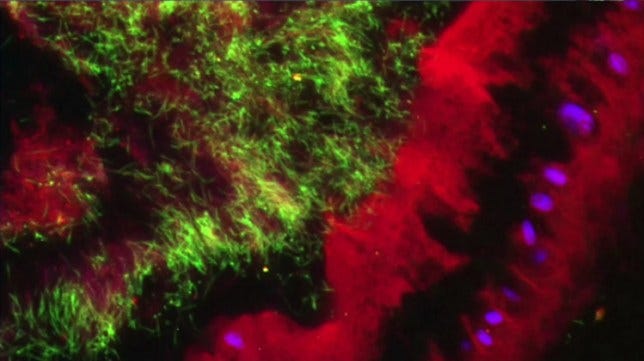

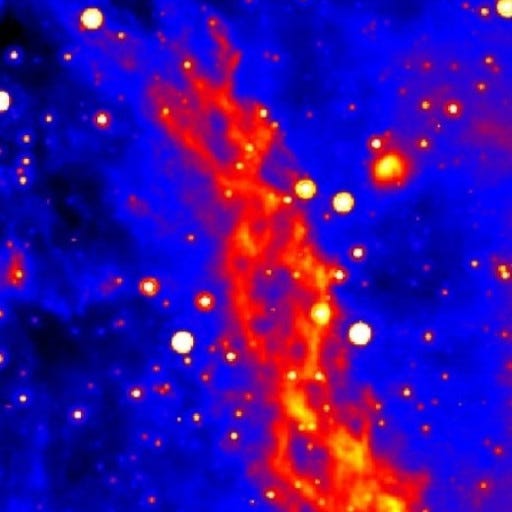
"This stuff is glorious! I enjoy your approach, the almost unwieldy brevity and your light-hearted zeal.
"Two initial comments:
"1 – PET PEEVE I, as a language theorist (aka linguist, by hobby) am ever conscious of the way a choice of words (often inadvertent, due to culture, bias, etc.) eclipses ingenuity and, worse, discussion that could lead to paradigm clarification. Example: Pro-life (is the opposite REALLY anti-Life?) & Pro-choice (is the opposite really anti-Choice?). A wall (not allowing for a bridge) is often thereby created. One of your assumptions is that Science is (an or the) antithesis of Religion when it comes to acquiring truth.
"What if:
"Science is a METHODOLOGY, a tool.
"Religion is a WORLDVIEW (regardless of methodology).
"Simply put: the two COULD work together quite well without all the work bridging the “v” (science v religion); I find that dichotomy quite unnecessary. Because we point to conclusions (of the methodology, which are inherently tentative) that contradict doctrines (which are inherently assumptions) we assume that the two are “obviously” on opposing sides. Perhaps – PERHAPS – there is another way to characterize, so that the two are both yielding what they yield, and rather than focusing on the variant conclusions we can (which you do) emphasize the congruent confluence which leads to a lessening of abstraction (a sense of clarity; assuming that one clarifying moment becomes the new “truth” is another issue – for another time).
"2 – Are you aware of this article? You might enjoy it. Though tangential to your thesis it covers some of the same ground.
"https://byustudies.byu.edu/article/physical-light-and-the-light-of-christ/
"3 – (I hate to leave things at the second prime number, regardless of my expressed intentions): I think your Conclusion section is BRILLIANT. This paragraph opened my eyes (and I didn’t even realize they were shut) and gave me a new way of looking at things:
"'Some light we can see, other light we are meant to seek. Light is a pattern of God. Physical light as well as spiritual light enables life and sight. But no matter how breath-taking physical light can be, spiritual light enables sight beyond the limits of physical light.'
"Thank you for sharing!
Glorious
"Love that the name and theme of your blog is light-related. Too much here for me to possibly comment on individually; you have a wonderfully dense post with many interesting things to ponder and that I will ponder for some time.
"Simply looking out into space we find a reality far more wonderful and bizarre than the greatest fictions written on earth.
"Light is one way to observe it. Light is a curious thing, it can show in the present what used to exist as many galaxies that we see through our most powerful telescopes may no longer be there any more. Light fills the immensity of space and we were given eyes to perceive the tiniest fraction of its grand spectrum.
"Light and the human relationship to it is profoundly fascinating. We rely so much on sight without realizing how weak it truly is at perceiving all of reality. Like, hearing, taste, touch, and smell, sight reveals only a small sliver of reality, most of which eyes are incapable of seeing.
"'Mortality challenges us to see with more than eyes.'"
Climber (oneclimbs.com)